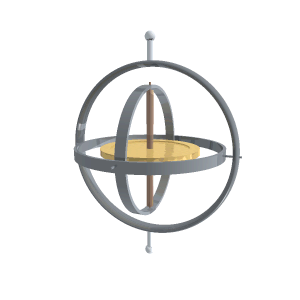User:Calvin-j-taylor/sandbox
Test
[edit]Description
This gyroscope large enough to contain a human being, used for cardiovascular workout and equilibrioception (balance) training in pilots and astronauts. Aerotrims enjoyed worldwide popularity in gyms during the 1980s, but are now out of production outside of professional applications. A handful of machines are still in circulation, largely used for entertainment at fairs and events and as sci-fi showpieces in movies and television. Several companies around the world have picked up the idea and produced their own version with slight changes. One of the originals, made in Korea, can be found in Slovenia at Aerotrim Ekopool Celje.[1]
About Exhibit
Although conceived by NASA as a training tool for astronauts, the Human Gyroscope is an effective educational tool for kids studying physical science. With three concentric rings connected by diametrically opposed ball bearings, the Human Gyroscope offers a rare opportunity for the body to experience space in a three-dimensional manner. Contrary to what most people think, the ride does not cause dizziness or nausea.
In the Human Gyroscope the spinning motion is possible on three different axes, X, Y, and Z. Each time the direction is changed, force in the form of muscle movement is required. The movement on the different axes causes a feeling of weightlessness. That, along with training the body to move to regain balance, made a form of the human gyroscope good practice for the early astronauts.
The Human Gyroscope and SPARKS: Understanding Energy are designed to teach students about potential and kinetic energy and energy transformations through dozens of interactive displays that demonstrate radiant, thermal, gravitational, mechanical, chemical, and electrical energy. Interactive programs targeting all ages supplement the SPARKS exhibition.
Visitors to the Museum can ride the Human Gyroscope—the ride is included in regular museum admission.
See it in action! http://www.youtube.com/watch?v=tjnYNpvZsQA
Industries
- Inertial Navigation Systems
- Stability sensing
Wikipedia Link https://en.wikipedia.org/wiki/Aerotrim


